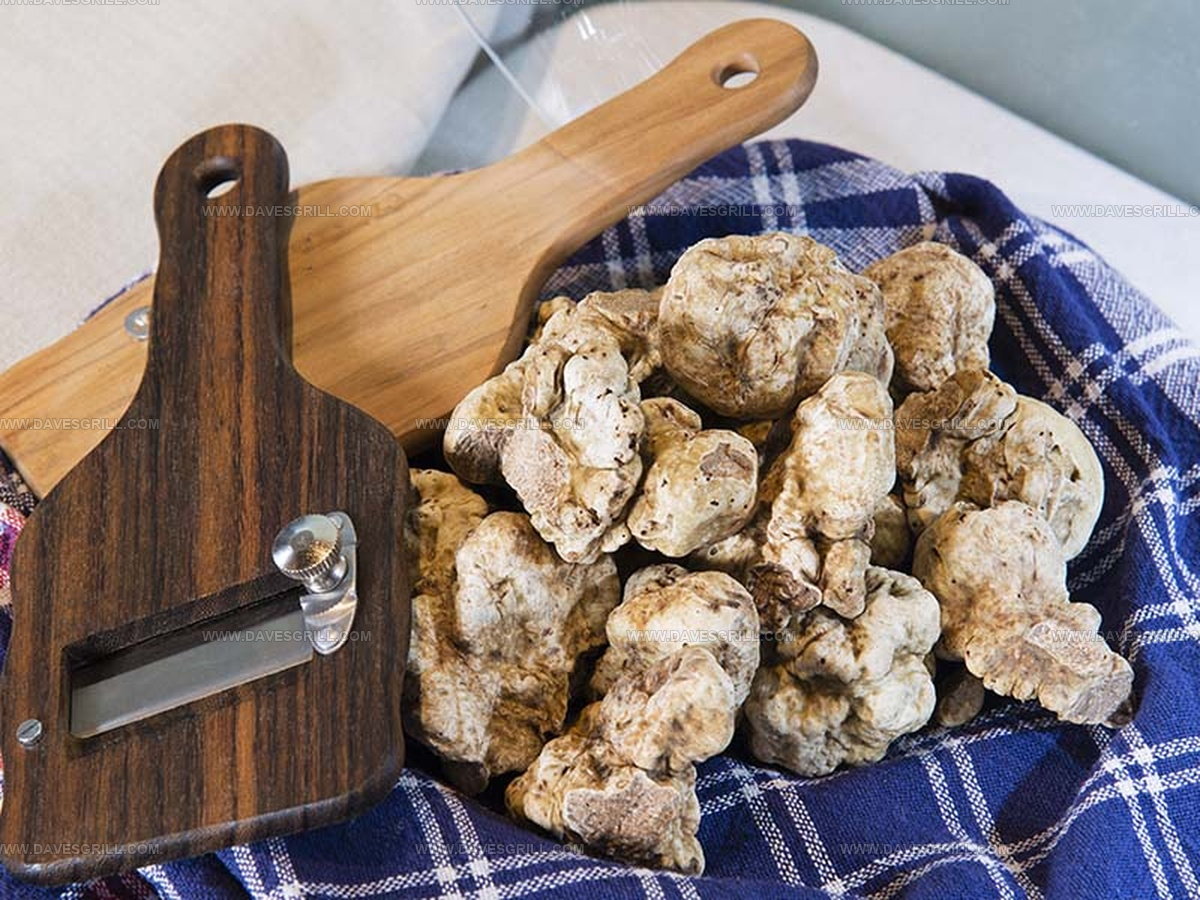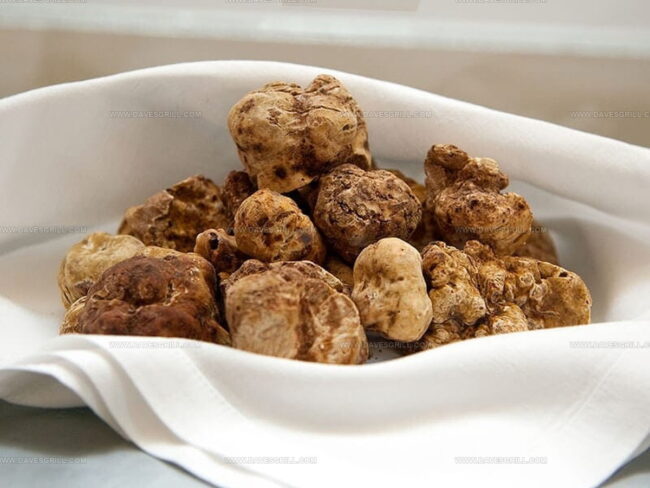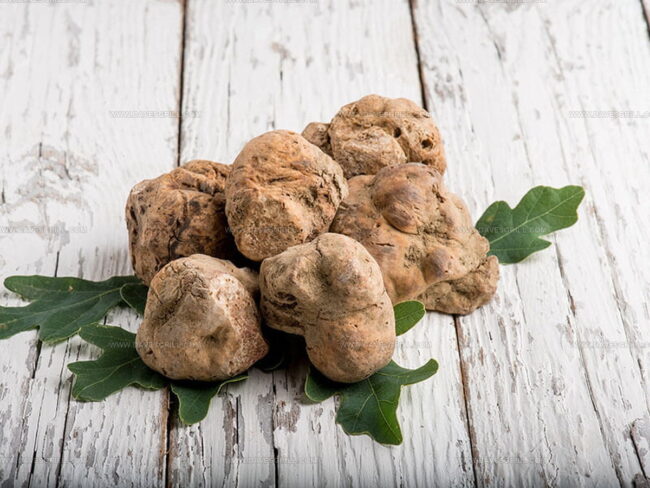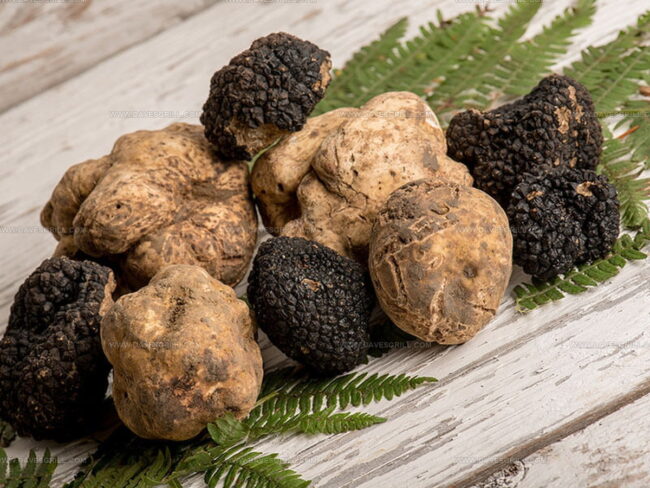White Truffle Taste: The Earthy Flavor That Makes Meals Royal
White truffles captivate food enthusiasts with their mysterious and luxurious reputation.
Rare underground fungi command astronomical prices in culinary circles worldwide.
Passionate chefs and gourmet lovers seek these delicate delicacies like treasure hunters pursuing golden opportunities.
Regions in Italy produce some of the most prized white truffles, transforming ordinary dishes into extraordinary experiences.
Sophisticated palates recognize white truffles as more than simple ingredients - they represent gastronomic artistry.
Intense aromas and complex flavor profiles make these fungi a pinnacle of culinary excellence.
Understanding the nuanced essence of white truffles requires more than casual observation.
Are you prepared to unravel the sensory secrets behind these remarkable culinary gems?
What Are White Truffles?
Truffles hide inches below ground, packed with rich flavors. Oak, hazelnut, and chestnut trees create perfect spaces for these special mushrooms.
White truffles from Alba (tuber magnatum species) top everyone's list because of their incredible taste and smell. Knobby and golden, these truffles look unique with firm flesh.
White truffles shine because of their large size (up to 9 centimeters wide!), rare nature, and amazing flavor.
People go crazy for white truffles, feeling something deep inside when tasting them.
Soil produces these special mushrooms, making them more special than any other root or fungus. Truffle hunters consider them incredibly valuable and almost magical.
Descriptions of their taste often sound like poetry, suggesting something beyond normal food experiences.
White truffles carry complex flavor profiles with one constant: a powerful smell.
Expect strong garlic notes mixed with earthy and pungent scents. First-time tasters find them mind-blowing and intense.
Prices reach astronomical levels - five thousand dollars per pound. Such extreme costs mean most people never experience these mushroom delicacies, keeping them super exclusive.
Taste of White Truffles
White truffles smell like earth and carry a warm garlic hint that many people enjoy.
Their unique flavor has a slightly funky touch that sets them apart from other mushrooms.
These special mushrooms taste different from black truffles, with a soft garlic note and deep musky smell similar to shallots.
Simple recipes become special when white truffles add their strong scent and delicate flavor.
White truffles pack a powerful taste with lots of rich flavor.
Chefs often use truffle oil instead of whole mushrooms because fresh white truffles cost so much money.
Their strong umami taste makes them popular in high-end cooking, where small amounts can make big changes to a dish.
Texture Of White Truffle
White truffles feel creamy and solid when you taste them.
Compared to black truffles, they seem smoother, and both types differ from typical mushrooms with their less spongy feel.
Mushrooms can sometimes feel tough or chewy, but truffles should never have that texture.
When a white truffle feels rubbery, it signals the truffle has passed its best time to eat.
Best Ways to Eat White Truffles
Cooking with truffles feels pretty simple.
People often use truffle oils to enjoy these special mushrooms.
You want to clean them carefully by scrubbing off all dirt, then slice them up.
Next, cook them gently in a small amount of oil or vegan butter until they become soft.
Experts suggest being super careful with white truffles because too much heat can quickly ruin their delicate smell and feel.
Truffle oil works differently and can handle higher temperatures without problems.
How Long Do White Truffles Stay Fresh?
White truffles spoil quickly and need fast eating.
People can enjoy these special mushrooms for about five days after picking them from the ground.
Someone who finds fresh white truffles should eat them right away.
Best results come from using white truffles on the exact day you buy or receive them to prevent losing their special taste and quality.
Why Are White Truffles So Expensive?
Scarcity drives up truffle prices because these special mushrooms grow under very specific conditions.
Small windows of availability make them hard to find.
Growing truffles takes tons of patience and special skills.
Farmers need special forest settings with exact climate conditions to help these mushrooms thrive.
Oak tree roots play a key role in truffle development.
Mushroom experts must monitor temperature carefully during growth cycles.
Short periods of ripeness mean farmers have limited time to harvest their precious crop.
Natural challenges like soil chemistry, tree relationships, and weather patterns make truffle production complex and unpredictable.
Careful tracking and deep knowledge of forest ecosystems help farmers hope for successful mushroom yields.
Success depends on understanding delicate relationships between trees, underground environments, and these rare underground treasures.
Where White Truffles Grow
White truffles fill Alba with excitement every fall, and people from all over wait for their daily arrival.
These special mushrooms take a unique journey before reaching your plate.
White truffles grow wild in Alba's woodland areas from September to December.
Hills of Piemonte's Langhe region stretch between rivers and mountain ranges.
These rolling landscapes include vineyards and small towns known for wonderful wines, cheeses, and mushrooms.
Soft clay and marl soil helps truffles grow large near oak, poplar, and linden tree roots.
Hunters bring special dogs who learn to smell these mushrooms from a very young age.
(People once used pigs to find truffles, but dogs work much better!) Dogs help hunters find exactly where mushrooms hide underground.
After finding the spot, hunters carefully dig up each mushroom, clean it gently, and share their special discovery with lucky people who will enjoy it.
White Truffle Hot Sauce Flavor
Truff's White Truffle hot sauce carries special organic coriander seeds, which taste like flowers and lemons.
Both White Truffle and Hotter sauces share this unique ingredient that brings a distinctive flavor punch.
Where Truffles Come From
Truffles are not something whipped up in a kitchen but a type of fungus from the Tuber group that grows in soil across Europe and Asia.
These underground mushrooms sprout near tree roots and depend on fungi-eating animals to spread their seeds around.
People might find this gross, but dishes with truffles create memorable taste experiences. Legendary chef Jean Anthelme Brillat-Savarin called truffles kitchen jewels because their rare qualities can change a meal completely.
Chefs in Italy, Middle East, Spain, Croatia, and France love using these special mushrooms in their cooking. Each mushroom brings unique flavor that makes regular meals feel special.
Their strong smell and rich taste set them apart from other ingredients. Hunters with special dogs search forest floors to find these hidden treasures deep underground.
Some truffles cost thousands of dollars per pound because they are so hard to locate. Black and white varieties offer different flavor profiles that excite food lovers worldwide.
Professional chefs consider truffles a symbol of luxury and skill in cooking. Wine and truffle pairings create magical moments at high-end restaurants.
Small amounts can completely change how a dish tastes and smells. Serious food lovers see truffles as more than just an ingredient - they represent culinary art.
Black vs. White Truffle Comparison
Turquoise truffles come in two colors and pack serious flavor punch.
White truffles carry strong, sharp garlic notes that make people sit up and take notice.
Black truffles smell different, with cooking actually helping their scent become more noticeable and rich.
Recipe choices depend on what other ingredients sit on your plate.
White truffles work best when you want something bold and daring.
Careful selection matters because each truffle brings its own special taste to meals.





Emily Lawson
Content Creator & Culinary Specialist
Expertise
Education
Oregon Culinary Institute
Diploma in Culinary Arts
Focus: Emphasis on farm-to-table cooking, sustainable practices, and the fusion of global flavors with traditional grilling methods.
Emily Lawson is the content creator at Daves Grill, turning tasty ideas into clear, easy recipes. Based in Portland, she trained at the Oregon Culinary Institute and loves cooking with fresh, seasonal ingredients, especially grilled veggies and global flavors.
Emily mixes food writing with hands-on cooking to bring you recipes that feel fun, not stressful. Her goal is to make every dish simple, flavorful, and worth coming back to. Together, she and Dave serve up real food, one recipe at a time.